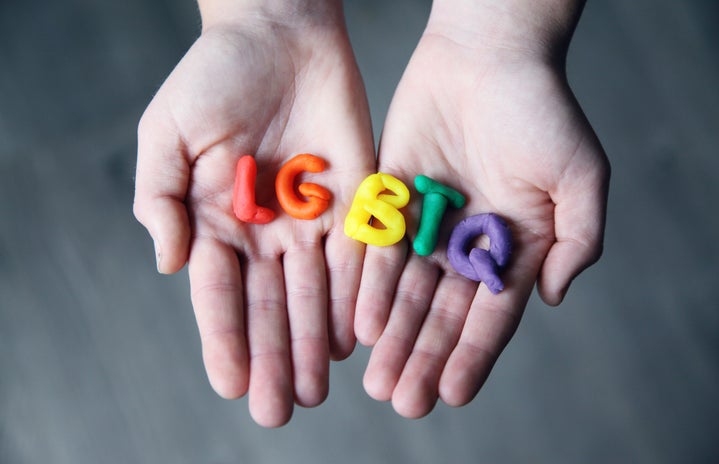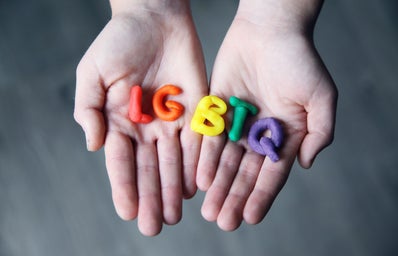Now, you know, how sometimes those 100 classes feel too basic and you wonder why you’ve to cover things high schoolers would know, well we finally have an answer for that.
Guess how? Because today’s lesson is going to be in a similar vein
And why? Because apparently, it’s necessary
It is the best of times; it is the worst of times. Knowledge is literally at our fingertips, simply a mouse-click away. Yet despite this effortless access to information, we live in an era of promiscuous “alternative facts” and “fake news”. Ignorance is a trend (how can it not be when the country’s president endorsed it for years); speculation is encouraged; misinformation is rampant; disinformation thrives. No wonder the first concern of colleges is to act as watchdogs and ensure we consume true, accurate, objective, and impartial information.
So let’s ace Ace101 by debunking the ace myths and misinformation so that by the time you finish this article, you are a little less of an ignoramus.
- Asexuality = abstention from sex
-
You’ve got to realize we’re talking about asexuality, not celibacy.
Asexuality – an orientation; meaning not experiencing sexual attraction (to different degrees)—finding a specific person sexually appealing and wanting to have sex with them; can engage in sex or sexual activities without it being directed towards a person
We are talking about desire, not behaviors.
Celibacy – a choice; celibates do experience sexual attraction targeted at a specific individual, but do not act upon it; do not engage in sex or sexual activities
We are talking about behavior, not desires.
- Asexuality is a singular identity
-
The commonality between all asexuals is experiencing sexual attraction towards a specific person to a lesser degree than allosexuals.
This means,
There is a huge diversity among those identifying as asexuals; there are asexuals that are absolutely not sexually attracted to anyone, there are some who experience attraction but to lesser degrees or others who do so at certain times or under certain circumstances—asexuality is a spectrum!
- Asexuality = disinterest in sex
-
No.
It means *not feeling sexually attracted to a specific individual* which has nothing to do with an interest in sexual endeavors.
Some asexuals may not be interested in sex and some maybe, but that’s not the distinguishing or defining criteria for asexuality and as such, should not be generalized.
- Asexuality = an illness
-
It absolutely is not!
Is heterosexuality an illness? Is homosexuality an illness? Or are any of the other identities not falling under asexuality illnesses? Why not? After all it involves lack of sexual attraction towards specific gender identity.
Therefore, similar to how all of those categories are simply orientations, asexuality is one too. There is something fundamentally wrong about leaping from the fact of a lack of sexual desire to a label of a sexual disorder, wouldn’t you agree?
- Asexuality = low libido/sex drive
-
As we discussed, asexuality is not at all about interest or lack thereof, in sex; it is about the inability to experience sexual attraction to specific people (to different degrees)
…which means asexuals might very well be masturbating and having other sexual experiences with a healthy libido, they simply aren’t sexually attracted to people or their sexual drive isn’t directed towards people.
The term you are looking for, in this case, is hyposexuality!
That’s the term referring to people with low or nonexistent libido who are unable to experience arousal who are not asexual.
- Asexuality = no sexual and romantic attraction
-
This myth has a somewhat legitimate background considering most sexual orientations encompass both sexual and romantic aspects of interpersonal relationships.
However,
Asexuality, as a term, only refers to the lack of sexual attraction (to different degrees); which means, asexuals are able to experience and express romantic attraction and feelings.
Aromantic is the term used to only refer to people who don’t experience romantic attraction (and vice versa, they may still experience sexual attraction sans the romantic component).
A lot of asexuals may be aromantic and aromantics may be asexual, but it is respectful to keep in mind that these two are distinct terms and identities implying distinct experiences and to fuse them into one is invalidation and erasure of the essence of these identities.
Now, for the most basic clarifications –
Is asexuality LGBTQ+/queer?
Before we answer this, let’s define the term heteronormative.
Heteronormativity includes both romantic and sexual components; allonormativity.
This implies even romantic asexuals and let’s narrow it down further, heteroromantic asexuals, aren’t heteronormative, because they don’t conform to both the sexual and romantic orientations.
And any orientation that isn’t normative is LGBTQ+/queer.
Are asexuals oppressed?
Asexuals face erasure and dismission both within the LGBTQ+ community and without; they face amisia (ever heard of acephobia/aphobia); they face discrimination; asexuality is still considered a medical condition in many catalogs; asexuals have lesser legal protection.
A poll conducted by Sky News in the UK in 2019 revealed that 53 percent of those surveyed were confident about knowing what asexuality is while 75 percent had wrong or misguided ideas about the same.
So, instead of deeming the prevalent premises about sex, sexuality, and sexual behaviors, universal, let’s take a step back to appreciate how ideas have changed over the issues and accord a sizable population of the world the respect and identification they deserve.
Fun (or necessary, depends on how you look at it) fact – Asexual Awareness Week is the full last week of October.


